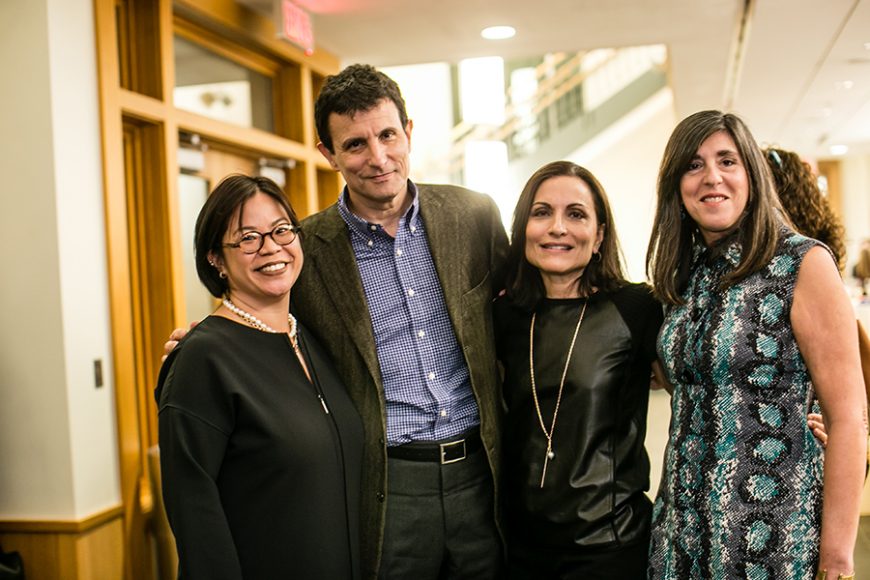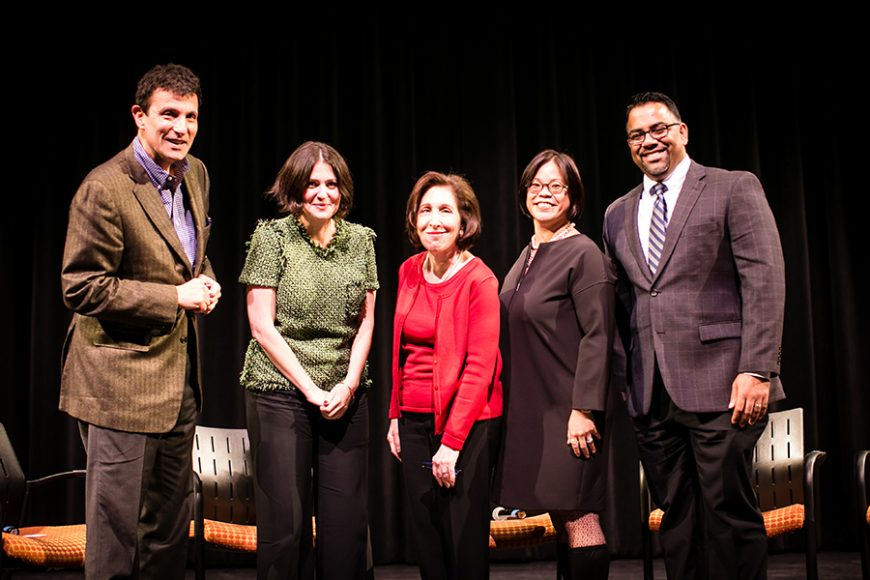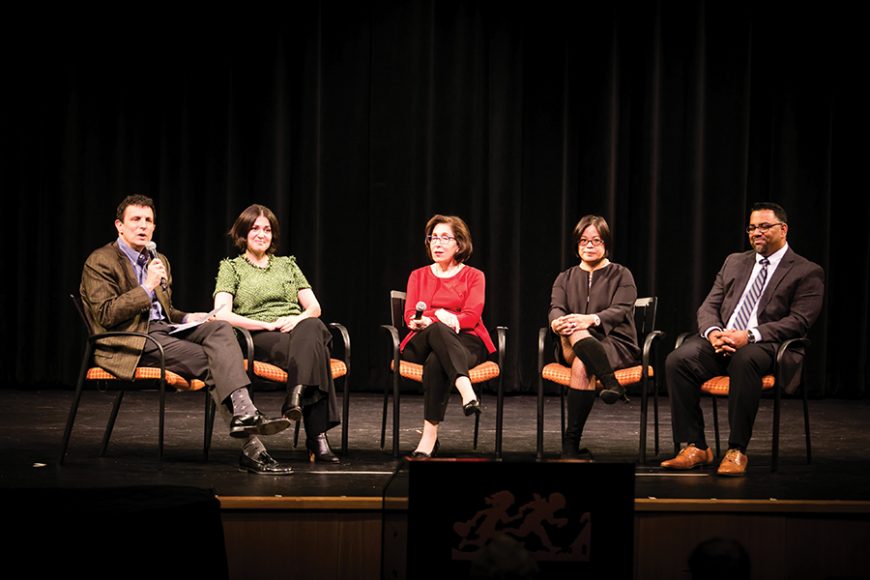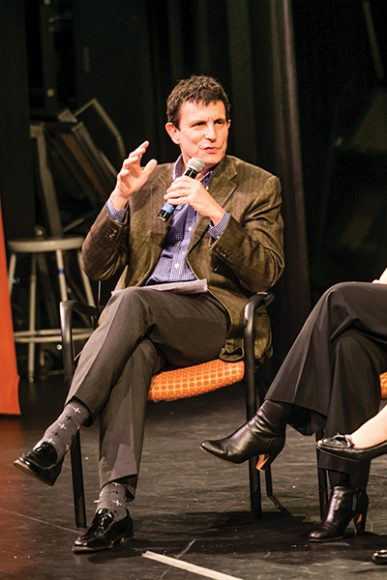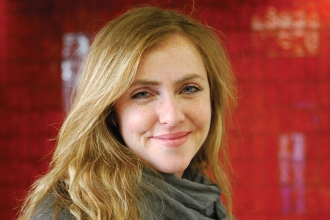What will happen when I die?”
It’s a gut-wrenching question many of us ask. But for those seated in a darkened theater at Greenwich Country Day School recently, the yearning for an answer was palpable and more altruistic than existential.
The audience — mostly parents and loved ones of someone on the autism spectrum — had gathered for a screening of the HBO documentary film “How to Dance in Ohio,” a poignant chronicle of three autistic young women who spent three months in group therapy preparing for a spring formal dance.
The prom, a coming of age tradition, was the brainchild of clinical psychologist Emilio Amigo as part of an innovative social skills therapy program in Columbus, Ohio.
“You need talented people,” David Remnick, editor of The New Yorker magazine, said in an interview with WAG at the event. He and wife Esther Fein, a former journalist with The New York Times, are the parents of three adult children, including an 18-year-old autistic daughter, Natasha.
She is among the more than half a million teens with autism who, over the coming decade, will fall off what experts warningly deem “The Cliff,” when young adults turn 21 and age out of a funded system of services. According to Autism Speaks, a nonprofit advocacy group, almost half of 25-year-olds with Autism Spectrum Disorder (ASD) have never held a job and 84 percent live with aging parents. What happens to autistic children when they become autistic adults?
In “How to Dance in Ohio,” filmmaker Alexandra Shiva captures one man’s answer as Amigo guides a group of autistic young adults through the social challenges of the prom in a way that left one woman in the audience dabbing at tears as the credits rolled. Programs like the one depicted in the film demonstrate that limitations can be breached and ambitions left intact. The screening drove home the need for organizations that fill a void.
Organizations like NEXT for AUTISM, which sponsored the event and numbers Remnick and Fein as board members. The nonprofit strives to improve the lives of people living with ASD in a tangible way. It opened the first evidence-based public school for autistic children in New York State (in Harlem) and a second recently in the Bronx. NEXT also developed The Center for Autism and the Developing Brain (CADB) at New York-Presbyterian Hospital, Columbia and Weill Cornell.
Fein says it is her and Remnick’s mission to help support organizations like NEXT that provide concrete solutions now, so important for those nearing or past “The Cliff.”
In so doing, they carve a path for their daughter to live with meaning, engagement and as independently as possible, enjoying the things she loves most, like the outdoors and the bustling city. They want other families to have the same peace of mind.
“We have to get from Monday to Tuesday to Wednesday,” Remnick said. “There’s a realism to it.”
After the screening, Remnick took the stage to moderate a panel that included Shiva; Christine Lai, a NEXT board member; Liane Kupferberg Carter, a writer and journalist who’s an autism advocate; and Jerry Philip, NEXT’s vice president of program development. Philip heads an employment program at NEXT that takes students into immersive work environments on three 10-week rotations. The students are assisted by a team that helps them transition into jobs and learn the different culture of work, which requires a flexibility and a reading of social cues that may not be in the autistic person’s skill set.
NEXT Co-founder and President Ilene Lainer — the mother of two adult sons, one of whom is autistic — spoke about advocating for all families touched by ASD. She said she understands the highs and lows articulated both in the film and on the panel. Every family has a unique struggle.
“The worst part for me was the loneliness,” panelist Carter said about the internal world of her son. Remnick asked whether she meant “his loneliness or yours?” “Both,” she said.
In response to a woman in the audience who was frustrated that television shows and films don’t present the severe end of the spectrum, Remnick reacted with a perspective he’s arrived at after 18 years of evolving opinion.
“I have a daughter who has very minimal language,” he said. “To get mad seems off and wrong. Life is too short. Nobody is exactly the same.”
He acknowledged that the first time he saw “Rain Man” (the 1988 film in which Dustin Hoffman portrayed an autistic savant), he was initially infuriated. Not everyone has a special talent or is a savant at math. According to the Centers for Disease Control and Prevention, about 44 percent of autistic children have average to above average intellectual ability and about a third have an intellectual disability.
The spectrum is wide. But if the public gains a greater understanding by seeing different manifestations depicted on film, everyone benefits. Eventually, a picture of an integrated future starts to form. Lainer likened the process to that of watching a Polaroid picture develop. At first, the image is blurry. Then shapes emerge and sharpen. It takes more time for the proper colors to appear.
It was almost 10 p.m. in Greenwich and the auditorium bustled with pioneers in adult autism swapping cards, networking and doing what’s necessary for those they love — all of them working
toward color.
For more, visit nextforautism.org.

